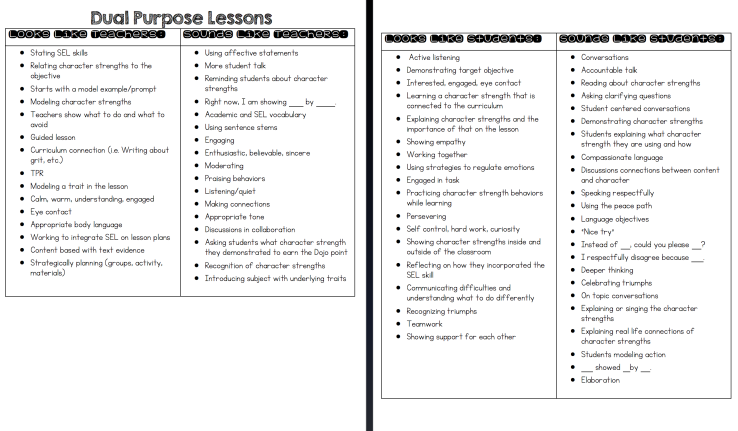Recently, Feaster Charter has had the opportunity to connect with two educators within the Chula Vista Elementary School District, Laura Meyers and Rosalinda Bautista. They have been coming to Feaster Charter to share their ideas on SEAL (Social Emotional Academic Learning) and brain based teaching.
The Impact of Social Emotional Learning
These trainings and the ideas supported within social emotional learning can help learners be more successful because it can prevent harm from occurring or festering by building a community and recognizing that mistakes and conflict will happen, but there is a socially intelligent way to resolve it and get beyond that harm so that learning can be effective and uninterrupted.
Social Emotional Learning, when it is addressed in the class setting, will support learners as they experience conflict and give them strategies and skills necessary to resolving that conflict.
What is Social Emotional Learning?
Social Emotional Learning works to support learners as they develop character strengths and learn how to react in a safe manner when a harmful action occurs. Social Emotional Learning supports with self awareness and self management, responsible decision making, relationships skills, and social intelligence. This concept can be applied to academic learning throughout the day and will work to create social leaders within classrooms and across the school.
Social emotional learning can occur through many different modalities – teaching character strengths, implementing trust circles, and teaching dual purpose lessons.
Character Strengths
Each quarter, Feaster Charter focuses on two character strengths. These eight strengths should be applied everyday throughout the entire day as applicable.
- Social intelligence – working well with groups, communicating with others, demonstrating respect in all interactions with others
- Grit – having the commitment to follow through
- Zest – actively participating and showing enthusiasm
- Self Control – making good decisions and being able to solve problems respectfully
- Optimism – thinking positive
- Gratitude – showing appreciation, saying thank you
- Curiosity – asking questions and looking for answers
These character strengths and the vocabulary can be used to teach students throughout the day as we go through our regular lessons.
Trust Circles
What are they?
Trust circles should be held daily as a preventative practice that can help build a community amongst the members of a classroom. Trust circles can cover any topic that is currently relevant to the classroom, they can address the quarterly character strengths, work to inspire the learners in a classroom, and they can prevent harm from occurring by addressing it before it becomes a concern.
When trust circles are effective, they get the learners who are part of the classroom community to know each other and build a relationship. Our learners on campus have often been in the same classrooms with their peers for many years; yet, they do not know each other in any way other than academically. Trust circles work to prevent that from happening.
When a classroom turns into a community, it is a more effective learning environment because everyone is able to work together collaboratively instead of in isolation. In addition, the learners in the community recognize emotions and life events and more supportive to each other.
What do they look like?
When first starting with trust circles, it is important to set up norms within the group. This should be done together as a classroom community. These norms should include respecting the thoughts and voices of all learners, working towards building a community, and helping everyone feel safe. The norms should be reviewed and followed throughout the year.
All learners in a classroom can sit or stand in a circle so that everyone can be seen and heard. Based on classroom needs, a brief video, or upcoming events, the teacher should choose a topic to focus on. The students may use a talking tool that is passed around the circle. While all learners are encouraged to share, it is not required. They may say something like “I have nothing to share yet” to demonstrate that it is perfectly okay not to share, but the ‘yet’ helps remind learners that they are welcome to share when the time for them arises.
It is important to note that trust circles may look different in each learning environment. As a leader, it is crucial that you understand the needs of your classroom community and work to support them. The overall purpose should remain consistent:
to build a classroom community where connections are made amongst all learners that will assist in academic learning as learners understand how to build positive relationships.
Dual Purpose Lessons
Dual purpose lessons work to integrate academics and SEL by:
- Pointing out character strengths in literature
- Strategically choosing literature that addresses the needs of the learners and holding a class discussion
- Pointing out character strengths that are needed in order to be successful on a task or project
- Modeling restorative practices as learning leaders
- Facilitating conversations that connect academic learning to SEL

*The above image explains how both teachers and students might look and sound during an effective dual purpose lesson.
Social Emotional Learning is effective when it becomes part of the classroom and school culture. This is a way of teaching and learning that supports all learners on campus – teachers, students, parents, staff, and community members.
